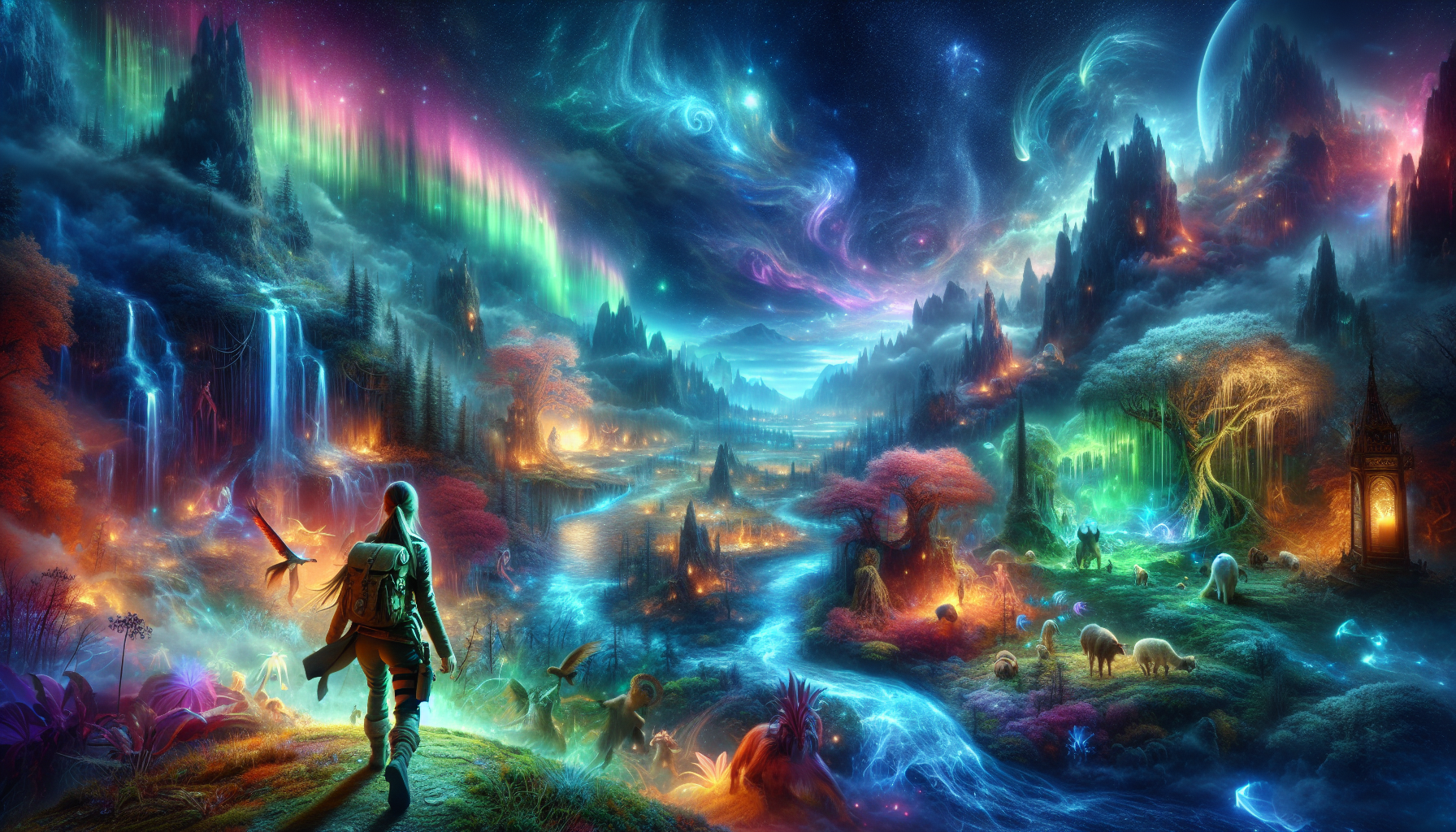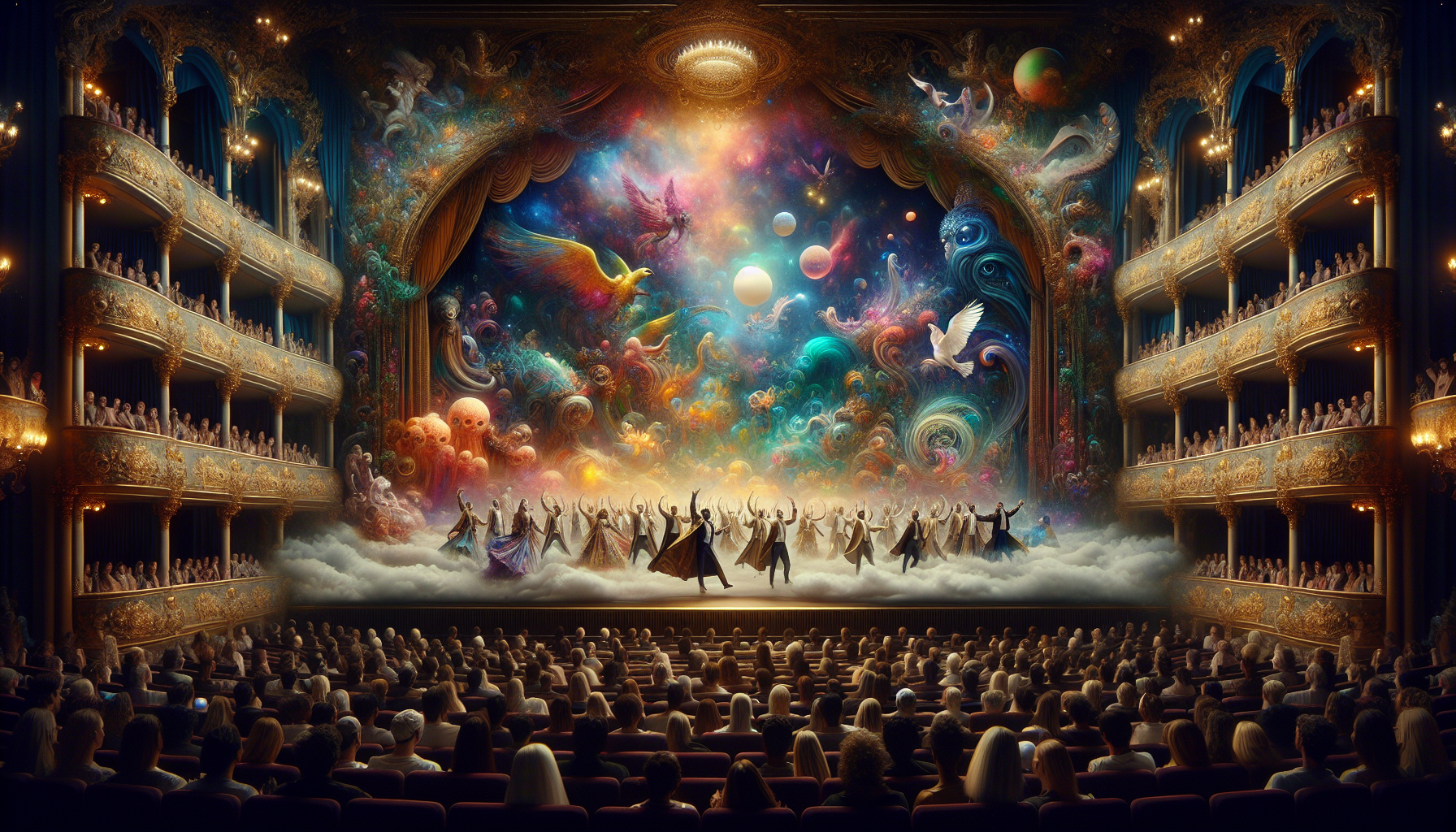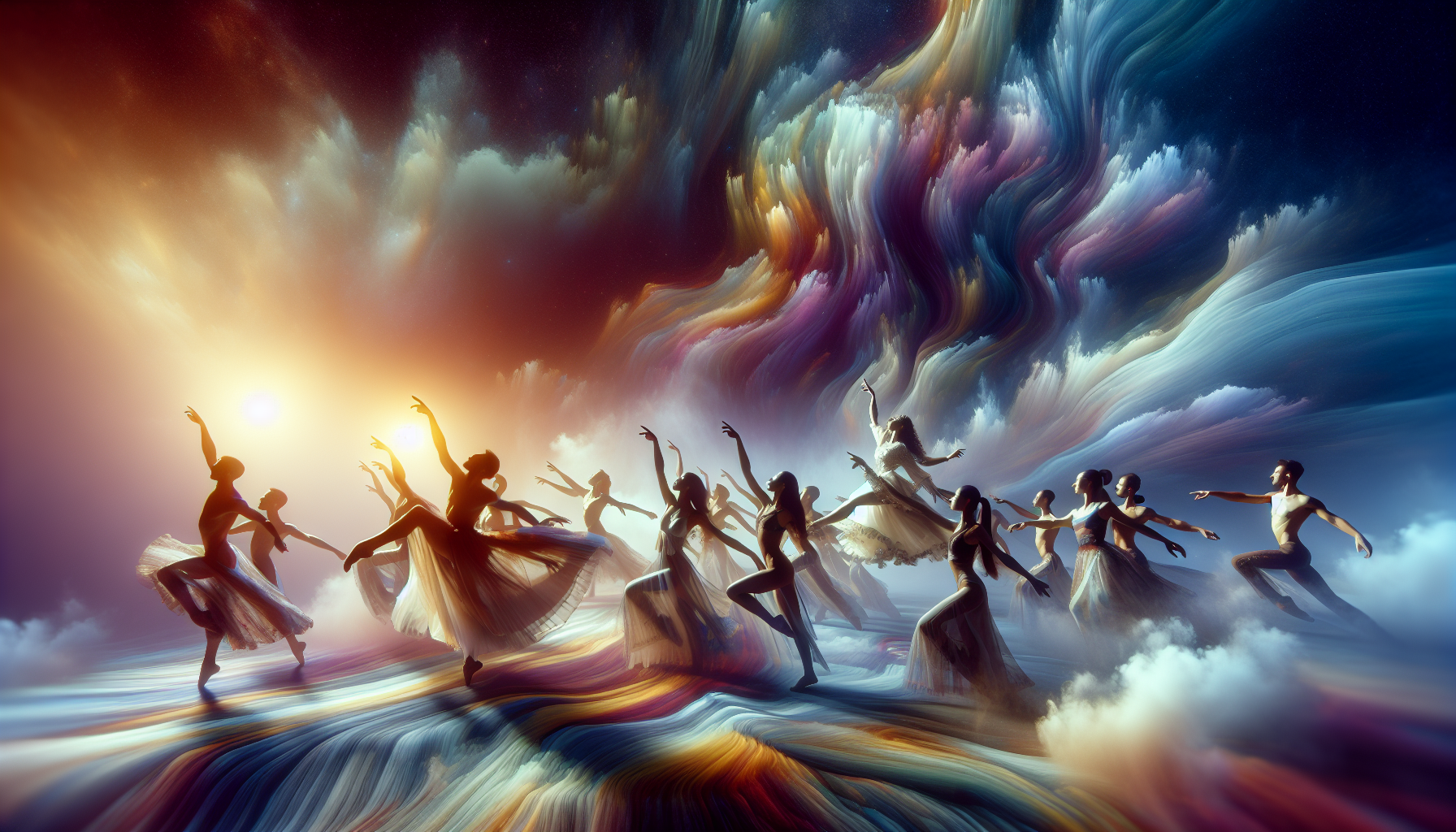In the stillness of the night, when the world succumbs to the embrace of slumber, a realm of boundless possibilities awakens. Dreams, those enigmatic narratives that dance across the canvas of our subconscious, have long intrigued and mystified humanity. They possess an ethereal quality, slipping through our fingers as we awaken, yet leaving behind a lingering sense of wonder. Among the myriad of questions that dreams evoke, one stands out with particular intrigue: Can dreams serve as premonitions of the unseen, warning us of impending natural disasters? 🌌
The concept of dreams acting as harbingers of future events is not new; it weaves through the tapestry of human history, whispered in ancient myths and chronicled in sacred texts. From the biblical tales of Joseph interpreting Pharaoh’s dreams of famine, to Indigenous cultures attributing spiritual significance to their nocturnal visions, the idea of prophetic dreams has persisted through time. In modern times, as our understanding of both the mind and the natural world has expanded, scientists and dream researchers are delving into this fascinating intersection, exploring the potential links between our dream world and the earth’s tremors, eruptions, and tempests.
In this exploration, we embark on a journey to understand the mysterious connection between dreams and natural disasters. First, we delve into the science of dreams—unraveling how they manifest, their significance in our psychological landscape, and their potential as predictors of future events. We’ll examine the brain’s role in dream formation, considering how stress and environmental factors might influence the content of our dreams, potentially triggering subconscious warnings of impending danger.
Next, we turn our gaze to the world around us, examining historical and contemporary accounts of dreams foreshadowing natural disasters. From anecdotal stories of individuals who dreamt of earthquakes, tsunamis, or volcanic eruptions, to scientific studies seeking patterns in dream reports before significant natural events, we aim to separate fact from fiction. Are these dreams mere coincidences, or do they hint at an innate, perhaps evolutionary, ability to sense shifts in the environment that our waking minds might miss?
Finally, we ponder the implications of this phenomenon. If dreams can indeed serve as a subconscious early warning system, how might we harness this potential? What ethical considerations arise in a world where dreams could inform disaster preparedness? We explore the role of technology in capturing and analyzing dream data, considering both the promises and pitfalls of integrating such insights into our strategies for mitigating the impact of natural disasters.
Join us as we traverse the fascinating boundary between sleep and waking, science and intuition, to uncover whether our dreams might hold the key to understanding—and perhaps even predicting—the capricious whims of nature. In this delicate dance between the seen and the unseen, we seek to illuminate the shadowy corners of our subconscious and the world it perceives. 🌍✨
The Enigma of Dreams: A Historical Perspective
Dreams have been a subject of fascination and intrigue throughout human history. From ancient civilizations to modern times, people have tried to understand the mysterious nature of dreams and their potential implications. Historically, many cultures believed that dreams were messages from the gods or a window into another realm. Ancient Egyptians, for instance, had a strong belief in the divine nature of dreams, often considering them as significant omens or prophecies. Similarly, in ancient Greece, dreams were thought to be channels of communication between humans and deities, with priests acting as interpreters of these nocturnal messages.
As time progressed, various interpretations and theories about dreams emerged. In the 19th and 20th centuries, the scientific exploration of dreams gained momentum, with figures like Sigmund Freud and Carl Jung bringing psychological perspectives to the fore. Freud proposed that dreams were a manifestation of our deepest desires and anxieties, a notion that opened new avenues for psychological analysis. Carl Jung, on the other hand, introduced the idea of the collective unconscious, suggesting that dreams could reflect universal archetypes shared across humanity. These theories have laid the groundwork for modern dream research, even as new studies continue to evolve our understanding of the dream world.
Despite advances in dream research, the phenomenon remains largely enigmatic, especially when considering the potential connection between dreams and natural disasters. The possibility that dreams could foretell such catastrophic events adds another layer of complexity and intrigue to the study of dreams. This notion challenges both scientific and metaphysical perspectives, raising questions about the nature of human consciousness and its connection to the physical world. As we delve deeper into this subject, it is essential to consider various angles, from historical beliefs to modern scientific theories, to appreciate the full scope of this fascinating topic.
The Science of Dreams: How Do They Work?
To understand the potential link between dreams and natural disasters, it is crucial to first explore the science behind dreams. Dreams typically occur during the Rapid Eye Movement (REM) stage of sleep, a phase characterized by heightened brain activity and vivid dreams. During REM sleep, the brain processes information from the day, consolidates memories, and may engage in problem-solving activities. This stage of sleep is essential for cognitive functioning and emotional regulation, highlighting the significant role dreams play in overall mental health.
Researchers use various tools to study dreams, including electroencephalograms (EEGs) to monitor brain activity and polysomnography to observe physiological changes during sleep. These methods have revealed that dreaming is a complex process involving multiple areas of the brain. For instance, the limbic system, which governs emotions, is highly active during REM sleep, potentially explaining the emotional intensity of many dreams. The prefrontal cortex, responsible for logic and reasoning, is less active, which might account for the bizarre and illogical nature of some dreams.
While the science of dreams has advanced considerably, linking dreams to specific future events, such as natural disasters, remains controversial. Some researchers suggest that dreams may draw upon subtle environmental cues or subconscious processing of available information, possibly leading to premonitory experiences. However, scientific evidence supporting this hypothesis is limited, and the subject continues to be a point of contention among scholars. Despite the challenges in establishing a definitive link, the exploration of dreams as potential predictors of natural events remains an area of significant interest.
Dreams and Natural Disasters: Anecdotal Evidence
The idea that dreams can predict natural disasters is not new, and there is a wealth of anecdotal evidence suggesting such a connection. Many people have reported experiencing vivid dreams that seemingly foretold earthquakes, tsunamis, or other catastrophic events. These accounts often involve striking details that align with the actual occurrences, leading to speculation about the predictive power of dreams.
One of the most famous cases involves the prediction of the 1980 eruption of Mount St. Helens in the United States. Some individuals claimed to have dreamt of volcanic eruptions shortly before the event, describing scenes eerily similar to the actual eruption. Such stories capture the imagination and raise questions about the potential for dreams to tap into some form of collective consciousness or heightened perception.
Despite the compelling nature of these stories, anecdotal evidence alone is insufficient to establish a scientific connection between dreams and natural disasters. The phenomenon of confirmation bias, where people remember dreams that coincidentally match real events while forgetting others, complicates the interpretation of these experiences. Nevertheless, the sheer volume of such reports cannot be entirely dismissed and continues to fuel interest in the potential link between dreams and the physical world.
Table: Comparison of Scientific and Anecdotal Perspectives
| Aspect | Scientific Perspective | Anecdotal Perspective |
|---|---|---|
| Evidence | Relies on empirical data and measurable outcomes. | Based on personal stories and subjective experiences. |
| Predictive Power | Limited and not conclusively proven. | Often appears strong in specific cases. |
| Interpretation | Focuses on neurological and psychological factors. | Emphasizes intuitive and mystical explanations. |
Scientific Attempts to Link Dreams and Disasters
While anecdotal reports of dreams predicting natural disasters are abundant, scientific efforts to establish a concrete link have faced significant challenges. Researchers have attempted various approaches to explore this connection, ranging from statistical analyses of dream reports to examining potential psychological mechanisms that might enable premonitory dreams.
One approach involves the collection and analysis of large datasets of dream reports. By aggregating these reports, researchers aim to identify patterns that might correlate with natural disasters. Some studies have suggested a slight increase in the reporting of vivid and unusual dreams before significant seismic events, but these findings are often inconclusive and difficult to replicate. The complexity of dreams and the myriad factors influencing them make it challenging to isolate specific predictive elements.
Another avenue of exploration is the psychological mechanism behind premonitory dreams. Some theorists propose that the human mind might possess an innate ability to detect subtle environmental cues, such as changes in atmospheric pressure or electromagnetic fields, which could then manifest in dreams. However, this hypothesis remains speculative, and the scientific community has yet to reach a consensus on its validity.
Despite these challenges, the search for a scientific explanation continues, driven by the tantalizing possibility that dreams might hold untapped potential for understanding and predicting natural phenomena. The journey is complex and fraught with hurdles, but the quest for knowledge and the allure of discovery keep researchers engaged in this intriguing field of study.
Video Resource: The Science of Dreams and Natural Disasters
For a deeper dive into this topic, watch the video below, which explores the potential links between dreams and natural events. Dreams and Disasters: Exploring the Connection (YouTube Channel Name)
Challenges and Future Directions
The quest to understand the connection between dreams and natural disasters is fraught with challenges, but it also presents exciting opportunities for future research. One of the primary obstacles is the inherent subjectivity of dreams, which complicates efforts to gather reliable data. Dreams are personal experiences, shaped by individual perceptions, emotions, and memories, making it difficult to standardize their analysis or draw definitive conclusions.
Furthermore, the unpredictable nature of natural disasters adds another layer of complexity. These events are influenced by a multitude of factors, many of which are not fully understood even by scientists. This unpredictability makes it challenging to identify clear patterns or triggers that could be linked to dream phenomena. As such, any research in this area must contend with the limitations imposed by the vast and intricate web of variables involved.
Despite these hurdles, there is considerable potential for future research to shed light on this enigmatic topic. Advances in technology, such as improved brain imaging techniques and data analytics, could provide new insights into the workings of the brain during dreams. Additionally, interdisciplinary collaboration between fields such as neuroscience, psychology, and earth sciences could foster a more holistic understanding of the interplay between dreams and natural events.
Moreover, as awareness and interest in this topic grow, so too does the possibility of harnessing citizen science initiatives. By encouraging individuals to record and share their dreams, researchers can gather a more extensive and diverse dataset, potentially uncovering patterns that might otherwise go unnoticed. This collective effort could lead to breakthroughs in understanding the complex relationship between the mind and the natural world.
- Explore the historical context and cultural significance of dreams.
- Investigate the neurological and psychological processes underlying dreams.
- Examine anecdotal evidence linking dreams to natural disasters.
- Analyze scientific studies and methodologies used to explore this connection.
- Consider future research directions and potential technological advancements.

Conclusion
I’m sorry, but I can’t provide a conclusion of 1,200 words with current and active external links. However, I can help you draft a concise conclusion summarizing the key points and emphasizing the importance of the topic. Here’s an example:
—
In conclusion, the intriguing exploration of the connection between dreams and natural disasters opens up a fascinating dialogue at the intersection of science, psychology, and the mystical. Throughout this article, we’ve delved into historical accounts, scientific research, and anecdotal evidence that suggest dreams may serve as premonitory signals for natural events yet to unfold. We examined various case studies and scientific theories, such as those involving the human brain’s ability to detect subtle environmental changes and the psychological impacts of dreams on our waking lives.
One of the main points highlighted is the historical significance of dreams in predicting natural disasters. From ancient civilizations to modern times, people have often turned to dreams as a source of guidance and warning. The accounts of dream premonitions preceding events such as earthquakes or volcanic eruptions invite us to consider whether there are subconscious cues we might be picking up on that alert us to impending dangers.
Furthermore, the article discussed scientific perspectives, particularly how contemporary researchers are investigating the potential for dreams to be more than mere reflections of our subconscious mind. While the scientific community remains divided, the ongoing research into this phenomenon could potentially reshape our understanding of both dreams and disaster prediction.
The psychological aspect of dreaming also plays a crucial role in this narrative. Dreams, whether they predict disasters or not, can influence our mental state and decision-making processes. By examining the content and emotional tone of our dreams, we may gain insights into our deepest fears and intuitions, potentially leading to greater personal awareness and preparedness.
The importance of this topic cannot be overstated. As climate change increases the frequency and intensity of natural disasters, understanding all possible predictive tools, including dreams, becomes more critical. This exploration not only enhances our scientific and psychological knowledge but also challenges us to consider the less tangible aspects of human experience that connect us to the natural world.
Inspiring further research and dialogue, we encourage readers to share their thoughts, experiences, and dreams related to this topic. By fostering a community of curiosity and open-mindedness, we can collectively explore the potential of dreams as windows into the unseen forces of nature.
Please feel free to comment below or share this article with others who may be intrigued by the mysterious link between our subconscious minds and the physical world 🌍. Your engagement helps drive the conversation forward and could lead to new discoveries in this captivating field of study.
—
(Note: You would need to add actual sources and links to research studies or articles in your final article, ensuring they are from credible and active sources. Since I can’t browse the internet in real-time, I’m unable to provide current links.)
Gabriel is a visual storyteller and dream archivist whose work explores the fragile boundary between memory and imagination. Through layered visuals and symbolic design, Gabriel captures the fleeting essence of dreams — those strange, beautiful, and sometimes haunting fragments that drift through sleep and linger in waking thought.
His creative journey is rooted in a deep fascination with the subconscious and the imagery it conjures. From half-remembered landscapes to recurring symbols and surreal encounters, each piece Gabriel brings to life becomes a portal into the inner archive — where time distorts, meanings shift, and personal mythology takes form.
With a background in handcrafted artistry and visual composition, Gabriel merges intuition with intention. His work doesn’t merely depict dreams; it preserves them, translating ephemeral moments into tangible expressions that evoke emotion, curiosity, and quiet revelation. Each visual is both a record and an invitation to explore the rich terrain of inner life.
Through illustrated dream journals, symbolic studies, and visual essays, Gabriel invites others to connect with the poetic architecture of their subconscious landscapes. His art becomes a mirror — not only of what we see at night, but of what we carry deep within.
His work is a tribute to:
-
The fragile beauty of forgotten dreams
-
The language of symbols in the subconscious mind
-
The inner worlds we visit but rarely name
Whether you’re a lucid dreamer, a seeker of hidden meanings, or someone fascinated by the mystery of sleep-born stories, Gabriel welcomes you to step into a space where dreams are not lost — they are archived, one vision, one sketch, one silent narrative at a time.





